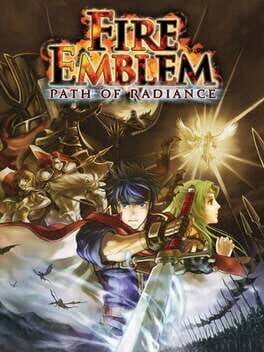At risk of beating a dead horse, I think the weakest part of Path of Radiance is easily its relatively low difficulty. To preface, this is from the perspective of a series veteran (“awakening babies” get to call ourselves vets now, how lovely) with a very intimate understanding of what’s ‘good’ in these games, but I started playing with 35% increased enemy growths, later bumped it to 55% and I still felt like I was cruising through most of the mid to lategame chapters. A lot of those chapters lack any sort of pressure to threaten your strong units or to push you to move faster (the latter camp usually being enemy thieves that a good mount can easily reach) and boil down to being very sluggish ‘fields with enemies’ that let you tackle them as risk-free as you want. Combined with how high growths are and how BEXP lets you blitz even further ahead of the curve and I think most of the game lacks bite even when the enemies are boosted to the point where they border on unfair. It has a lot of interesting things going on in theory - side objectives for BEXP, forges being limited to one per chapter, some cool gimmick chapters late on (CH22 is just a pokemon strength puzzle and I kinda love it) - but the game never has quite enough friction to bring out its own potential.
But the draw of PoR mainly comes from the strength of its writing. The majority of the character writing is very realistically grounded in the game’s settings and situations. Every support and base conversation is lovingly woven to bring out subtleties of the cast’s personalities, worldviews, personal struggles, dynamics, their growth or lack thereof. Their personalities are strong but not exaggerated (for the most part) and the interactions are full of little remarks or conversations that feel unexpectedly resonant or meaningful. It’s a lovely cast that’s very difficult not to fall for. While the story itself has a large focus on Fantasy Racism and does stumble a little into its trappings (primarily its tendency to categorise all Kilvans in one particular way), its angle towards it feels very carefully-written and used in a way that attempts to earnestly explore attitudes towards prejudice. It uses its depictions to present the importance of uprooting systemic oppression and breaking the self-perpetuating cultures of hatred that it brings, and how vital it is to do so despite how much of a Herculean task it is in reality. It all further feeds into a broader theme held up by scenes beyond how it presents discrimination - how understanding and righting past wrongs is vital to be able to truly move forward and make meaningful change or growth. It’s the *honesty* of all its explorations, more than anything, that I found so unexpectedly disarming.
It caught me off-guard with how much I ended up liking it, but it’s really easy to see why it’s so beloved. If you don’t mind it being slightly defanged on the strategy end, it’s a lovely, warm and charming game that’s surprisingly confident in its writing.
But the draw of PoR mainly comes from the strength of its writing. The majority of the character writing is very realistically grounded in the game’s settings and situations. Every support and base conversation is lovingly woven to bring out subtleties of the cast’s personalities, worldviews, personal struggles, dynamics, their growth or lack thereof. Their personalities are strong but not exaggerated (for the most part) and the interactions are full of little remarks or conversations that feel unexpectedly resonant or meaningful. It’s a lovely cast that’s very difficult not to fall for. While the story itself has a large focus on Fantasy Racism and does stumble a little into its trappings (primarily its tendency to categorise all Kilvans in one particular way), its angle towards it feels very carefully-written and used in a way that attempts to earnestly explore attitudes towards prejudice. It uses its depictions to present the importance of uprooting systemic oppression and breaking the self-perpetuating cultures of hatred that it brings, and how vital it is to do so despite how much of a Herculean task it is in reality. It all further feeds into a broader theme held up by scenes beyond how it presents discrimination - how understanding and righting past wrongs is vital to be able to truly move forward and make meaningful change or growth. It’s the *honesty* of all its explorations, more than anything, that I found so unexpectedly disarming.
It caught me off-guard with how much I ended up liking it, but it’s really easy to see why it’s so beloved. If you don’t mind it being slightly defanged on the strategy end, it’s a lovely, warm and charming game that’s surprisingly confident in its writing.
